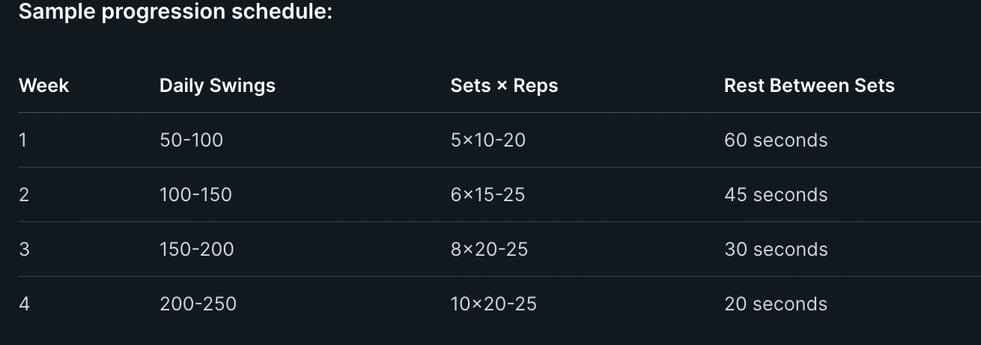
Viral 30-Day Kettlebell Swing for Full Body Challenge
Discover the viral 30-Day Kettlebell Swing Challenge taking over TikTok! Learn how this simple yet effective workout builds full-body strength, boosts cardiovascular fitness, and transforms your physique in just one month. Perfect for breaking through fitness plateaus and building core stability with minimal equipment.
2 min read
30-Day Kettlebell Swing Challenge: The Viral Workout That Builds Full-Body Strength
TikTok has launched another fitness trend into the spotlight, and this time it's the 30-Day Kettlebell Swing Challenge. This simple yet effective workout has captured the attention of fitness enthusiasts across the platform, with thousands sharing their transformative results after just one month of consistent training.
The challenge involves performing kettlebell swings daily for 30 consecutive days, progressively increasing either the number of repetitions or the weight used to continuously challenge the body. Participants report improvements in core strength, posture, cardiovascular fitness, and overall body composition, making this more than just another passing social media fad.
For those looking to break through a fitness plateau or add an effective full-body exercise to their routine, this challenge offers a straightforward approach with minimal equipment requirements and time commitment. Many fitness experts have endorsed the kettlebell swing for its ability to engage multiple muscle groups simultaneously while also providing cardiovascular benefits.
Mastering the 30-Day Kettlebell Swing Challenge
The kettlebell swing challenge requires dedication, proper form, and strategic progression to achieve maximum benefits. Participants typically experience improvements in strength, cardiovascular fitness, and body composition when following the structured 30-day program correctly.
Setting Up for Success: Equipment and Space
A proper kettlebell setup requires minimal but specific equipment. Participants need at least one kettlebell—beginners should start with 8-12kg (women) or 12-16kg (men) while more experienced lifters might use 16-20kg (women) or 20-28kg (men).
Essential equipment:
Comfortable, supportive footwear
Space requirements are modest but important. Participants need approximately 6×6 feet of clear area with sufficient ceiling height to accommodate the full swing arc.
The exercise surface should be level and stable. Carpet, rubber flooring, or exercise mats work well, but slippery surfaces like tile should be avoided for safety reasons.
Indoor garages, living rooms with furniture pushed aside, or outdoor spaces like patios all serve as suitable locations for completing the daily challenge requirements.
Kettlebell Swing Form: Proper Technique and Safety Tips
The kettlebell swing is a hip-hinge movement, not a squat. Proper form begins with feet shoulder-width apart and knees slightly bent.
Key form elements:
Initiate the movement by hinging at the hips
Keep the back flat throughout the entire motion
Drive through the heels when extending the hips
Allow the kettlebell to float to chest height through hip power
Maintain tight core engagement throughout
Common mistakes include squatting instead of hinging, rounding the lower back, and using arms to lift the weight. These errors reduce effectiveness and increase injury risk.
Breathing technique matters significantly—participants should exhale forcefully during the explosive upward phase and inhale during the downward phase. This breathing pattern enhances core stability and power generation.
For safety, beginners should master the hip hinge pattern without weight before progressing to the full kettlebell swing.
Daily Workout Structure and Progression Guide
The 30-day challenge follows a strategic progression model to build strength and endurance gradually. Most participants begin with 50 daily swings and increase volume weekly.
The program incorporates strategic rest days—typically on days 8, 15, 22, and 29—to allow for recovery. These rest periods are essential for preventing overtraining and reducing injury risk.
Performance plateaus are normal around day 10-14. When this occurs, participants should focus on form refinement rather than increasing volume or weight.
Tracking progress through video recordings helps identify technique improvements and maintains motivation throughout the challenge period.




